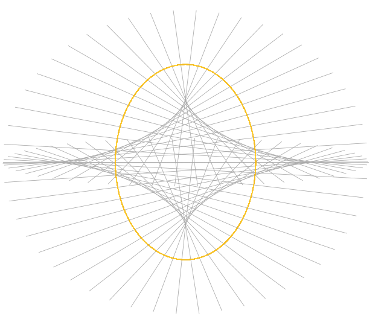8 Perspectives on Deep Inner Work –
The Path for Personal and Professional Growth
The Path for Personal and Professional Growth
Part 3 of 8: From Disconnection to Re-Connection & Addressing Trauma
October 19, 2022
This is part three of an eight-part series on deep inner work at Evolute Institute. For the other parts check out:
- Article 1: Increasing our inner freedom
- Article 2: Moving into higher mindsets
- Article 3: From disconnection to re-connection & addressing trauma
- Article 4: Healing Psychological Wounding and the Work of Grief
- Article 5: Overcoming Cultural Conditioning
- Article 6: Increasing Psychological Flexibility
- Article 7: Fostering Integration through and beyond psychedelic work
- Article 8: Acquiring Wisdom for a Good Life
A meta-crisis of disconnection
Our current predicament, the meta-crisis we are facing globally, but particularly in Western societies, has been diagnosed as and subsumed from various authors under the umbrella of a crisis of disconnection [1] . Many people are disconnected from their selves, especially their bodies, from other people, their close community and wider society, from nature, the web of life, and from the transpersonal – a belief in something bigger than the individual self. This separation creates conflicts within and between us, instigates polarization, violence and war. It is the source of environmental degradation and of the destruction of our shared biosphere. It is a breeding ground for the epidemic of hopelessness, lack of orientation and despair that we currently witness across the globe.
The Three Divides. Otto Scharmer, u-school.org
How did this disconnection happen?
There are many different ways to approach the question of where the origins of this disconnection are to be found. Some might also point to individual biographic occurrences such as woundings that occur when we grow up. Others point to cultural, social and technological developments over centuries (everything from the Enlightenment to Capitalism, from Industrialisation to Digitisation, from various forms of Authoritarianism to the educational systems and media (ab-)use. We will explore those vectors more in future articles.
Today, however, we would like to focus on another angle that has been illuminated by the work of researchers and practitioners in the field of trauma work. These experts describe trauma essentially as “broken connection” that can happen both individually and collectively. On an individual level, trauma can result due to overwhelming experiences, both as a reaction to one-time shock experiences and more chronic, long-term developmental overwhelm. On a collective level, unresolved trauma is perpetuating itself in continued cultural and family-based generational cycles – you could say in a “karmic wheel” of trauma.
At first the issue of trauma might sound a little far-fetched when we talk about personal, professional and leadership development. However, we firmly believe that a trauma-sensitive perspective – which is at its core a perspective of disconnection and re-connection – can be immensely valuable if we want to understand the principles of and obstacles to development and growth. With a properly trauma-informed perspective we return to the source of what it means to be human and to be conscious, to the essence of deep inner work.
Why is everybody talking about “trauma” now?
Trauma has been a popular topic lately,[2] with many people in therapy, coaching and spiritual communities jumping on the topic after the trauma perspective has been “re-discovered” as a crucial lever for addressing mental conditions that are hard to treat otherwise, especially (complex) PTSD, and ranging from everything like veteran’s war trauma to developmental trauma from severely dysfunctional parenting environments.[3] There are justified reasons to be excited of course – the trauma perspective is essential to understanding and addressing the predicament of many people suffering, individually and collectively. However, in many discussions or articles the term is used expansively and not defined clearly. We feel sometimes the issues or phenomena discussed might better be thought of or called “woundings”, “hurt”, “distress”, “conditioning”, or even “issues” or “challenges” – not everything can or should be called “trauma” if the term is to keep a distinctive meaning.
So what do we mean here when we say “trauma”?

Photo by Artem Sapegin on Unsplash
Understanding trauma and its different forms
At Evolute Institute, we believe trauma is best being thought of as a reaction to an overwhelming experience where the individual’s nervous system shuts down / fragments due to overwhelming feelings of fear (terror, panic…) in response to a threat to (physical or psychological) survival. Importantly, the individual is overpowered because her intense feelings cannot be properly processed due to the necessary (intra-psychic or interpersonal / relational) resources not being present when the overwhelming event(s) occur(s).
A prime example is a child that needs the protective umbrella of its parents in order to be able to survive, be nourished, and to be empowered to deal with the world out there. The parents (primary caregivers) lend their physical, emotional, and mental resources to the child, based on their knowledge about the world and its promises and perils. When they are sufficiently resourced themselves, they attend to the child’s needs in a reliable and continuous way and respond to the child in a soothing and calming manner when it is distressed or anxious. The parents are the safe haven for the child and the secure base from which to explore the world.[4]
Acute or developmental trauma can happen when the child’s physical safety is at danger and it does not feel sufficiently protected, when the child’s needs are not properly recognized, when the caregiver relationship is discontinuous, or when the child is not attuned to and co-regulated properly, especially during distressing states.

Photo by Helena Lopez on Unsplash
Trauma manifests in chronic nervous system dysregulation, i.e. a state where an over-activation of the fight-flight-response has led to a shut-down (freeze or collapse) of parts of the nervous system.[5] Trauma exists on a wide scale of intensity and comprehensiveness ranging from “localized” trauma activation in certain situations that quickly fades away again to trauma expression where life and work of the person are severely hampered.
In the former case – let’s call it trauma with a “small t” – an example could be getting an elevated pulse for a few seconds after seeing a yellow VW Golf passing by in the city center, reminding you of your accident in a very similar car. Or having a strong emotional response to seeing an ex-partner that misused your trust in the past.
In the latter case – Trauma with a “capital T” – an exemplary condition could be not being able to enter or maintain a romantic relationship because you experienced sexual abuse in your childhood. When a trauma state is active or being triggered, it is accompanied by or leads to feelings of numbness (up to disembodiment / dissociation) or disorientation and panic attacks (great fear, feelings of helplessness, hopelessness, despair) and can end in depression and suicidal ideation.
Frozen past experience

Photo by Jared Erondu on Unsplash
The way trauma affects our lives can be explained best metaphorically[6]: In order to get rid of an overwhelmingly painful sensation or feeling (experience), your innate survival instinct (your primary consciousness) makes you go down into the basement, package your trauma into a plastic wrap and stuff it into your freezer – where that is kept and cannot wreak havoc to your life anymore. This intelligent function of your nervous system allows you to continue living despite of the overwhelming experience. There is no free lunch, however. Now you have to pay the electricity bill for the freezer – and invest a lot of energy to keep the freezer running. You must pay for keeping that package frozen by diverting your life’s energy away from people and activities that give you meaning and joy in order to keep that freezer running, and the more you stuffed into that freezer the higher the electricity bill.
How can you work with trauma?

Photo by Pawel Czerwinski on Unsplash
Serious “large T” trauma like (complex) PTSD is best being dealt with in a professional clinical context. To be transparent, the Evolute Institute does not offer any sort of clinical trauma therapy and does not work with clinically diagnosed trauma patients who are not functional in life (e.g. not able to hold a job or engage in close relationships). “Smaller” pockets of trauma (“small t”) that do not render a person unable to deal with life and work but that nonetheless impede a person on their developmental path can be addressed through deep inner work in the appropriate setting (safe physical environment and social / psychospiritual support) with the cultivation of the appropriate mindset (individual preparation and intention-setting).
The journey of trauma healing is one where what could not be felt at that overwhelming moment in the past is being carefully brought to the present and allowed to be sensed and felt again. This time, however, the traumatized individual has enough resources to process the uprising emotions thanks to the power of both self-regulation (e.g. by using tools such as “defusion” or breath regulation) and co-regulation, e.g. a supportive environment with a skilled and empathic facilitator or group. By honouring the defence mechanism of trauma – the “wisdom of trauma”[7] – , by honouring their fear, people can create space for a conscious process where what has become stuck in space and time can get into movement again. Intense sensations and emotions can be processed layer by layer and a restoration of the original movement can happen. The trauma patterns dissolve into presence and flow.
A crucial lever in the healing of trauma is a conscious involvement of the body in the process work, be it in a coaching or in therapeutic process. One of the world-leading trauma researchers, Dr. Bessel von der Kolk, expressed it in the title of his bestselling book: “The Body keeps the score””[8]. The parts of our mind that implement and store the trauma response (retraction, dissociation…) are very old circuits of the nervous system (“primary consciousness”) that cannot be effectively altered by analytical, neo-cortical, cognitive approaches in the younger and “higher” parts of our brains/nervous systems, sometimes called “secondary consciousness”[9]. Hence, we must add somatic (body-oriented) components to the work, and we need to let the body do its process – which asks facilitators and therapists to support people in the physical processing of their trauma in whatever way it wants to express itself (often in shaking, trembling, movements, and of course in the emotional expression of the stored patterns and energy). Peter Levine said: [10]
"All traumas lead to Rome. And Rome is the body"
Peter A. Levine, PhD
This perspective is also supported by the lessons from different somatically informed therapeutic approaches, such as Levine’s own Somatic Experiencing[11] or Ron Kurtz’s mindfulness-based and body-oriented psychotherapy named HAKOMI[12]. Helping people to reconnect with their embodied self-awareness is an important part of the healing process when it comes to trauma.[13]
Sounds like a lot of work – is it worth the trouble?
Short answer: yes.
In every trauma there is a pearl for us to harvest, a gift that might illuminate our lives and give us meaning and orientation. And if there is trauma, chances are high it manifests itself in our every-day lives, in our close relationships at work and at home, and leads to unnecessary frustrations, conflicts, challenges, and suffering. When we encounter the same problems again and again, when we seem to be stuck in certain patterns of behaviour – especially around intimate or family relationships – then it might be worth to have a look at the underlying root cause of those “frozen patterns in time and space”. Only then we grant ourselves the opportunity to liquify them, melt them, so that we can break the “karmic cycle” and start becoming someone new. Moreover, if there are concrete situations / constellations in our personal or professional lives that trigger a very strong emotional response that for external observers (or – with some distance -even for ourselves) seems out of proportion and overblown, we can be reasonably sure that there is an underlying condition with a lot of energy stored in it – a trauma loop that waits for us to be consciously acknowledged, appreciated and processed.
Some might contest: “But even if I have potentially suffered from bad experiences, I am sure it is not that bad that we can call it trauma, right?”
We would answer to this objection: Think of a trauma as an experience that was so painful that your nervous system needed to separate it from the rest of your system to protect yourself. Even when you think that the bad experiences you have lived through were not extremely serious (e.g. “My parents divorced when I was a child, but neither did I grow up in a war zone nor was I sexually abused as child”), one should not underestimate how certain experiences could have been overwhelming for us when we were children. And a negatively overwhelming experience that has not been integrated is likely a traumatic experience.
So we say: it pays to look into areas where we can’t feel, where we are numb, where we feel disconnected and distant – and they will lead us to the trauma fields in and between us.[14] And sometimes the indication that there is something amiss can come from observing our relationship experience, from direct or indirect feedback in relationships or from getting a sense that other people can feel, sense and perceive things that we cannot. Those indirect ways of detecting an area of numbness or “broken connection” can provide valuable guidance to our own healing process.
Melting the ice in the freezer

Photo by Olha Fedchenko on Unsplash
To sum up and returning to our “freezer analogy”: Addressing and healing trauma can help people liberate their wasted energy – both the energy in the frozen experience and the energy they constantly have to use to keep the freezer running. By “melting” the trauma under the right conditions (well prepared and in the right setting), people can reclaim their full life force and use it for more noble purposes – to develop and grow, to manifest their creativity in life, love, work, play and in helping others.
To repair our “broken connections”, to re-connect with our own mind, body, and heart, with other people and nature will help us unleash our full potential as human beings and in our leadership roles. The crisis of disconnection, that we started this article with, can be – we believe – remedied one person at a time. The benefits of re-connection have ripple effects to the people, organisations and societies around us. This is why leaders especially can have a tremendous positive impact on their organisations and wider society when they have faced and remedied their own issues of disconnection. Through re-connection we can meet the challenges of our times from the inside out, as for example also The Mindfulness Initiative states in their latest report with regard to the climate crisis:
Image: The Mindfulness Initiative: Reconnection – Meeting the Climate Crisis Inside out
This perspective of re-connection and of trauma-informed process work is part of how we see deep inner work at Evolute Institute. Leadership means to promote re-connection in ourselves and in others.
This perspective is, however, not the final perspective on inner work. In the following article we will therefore look into a 4th perspective on deep inner work: healing psychological wounds:
In case you liked what you read and haven’t done so already: check out the previous articles of this series:
- Article 1: Deep inner work: How to increase inner freedom
- Article 2: Deep inner work: Moving into higher mindsets
And if you want to be part of a pioneering group of entrepreneurs, organisational leaders & decision-makers, change-makers and visionaries who embark on this journey of intentional inner work with altered states of consciousness, check out one of our retreat programs, e.g. our 3-month long hybrid personal and leadership development journey EvoLEAD. We’re happy to have an exploratory conversation with you at a time of your convenience.
Christopher Kabakis
Contributing Author
Dmitrij Achelrod PhD
Christopher Kabakis
Contributing Author
Dmitrij Achelrod
Subscribe to the insights newsletter
At most, once every 2 weeks.





